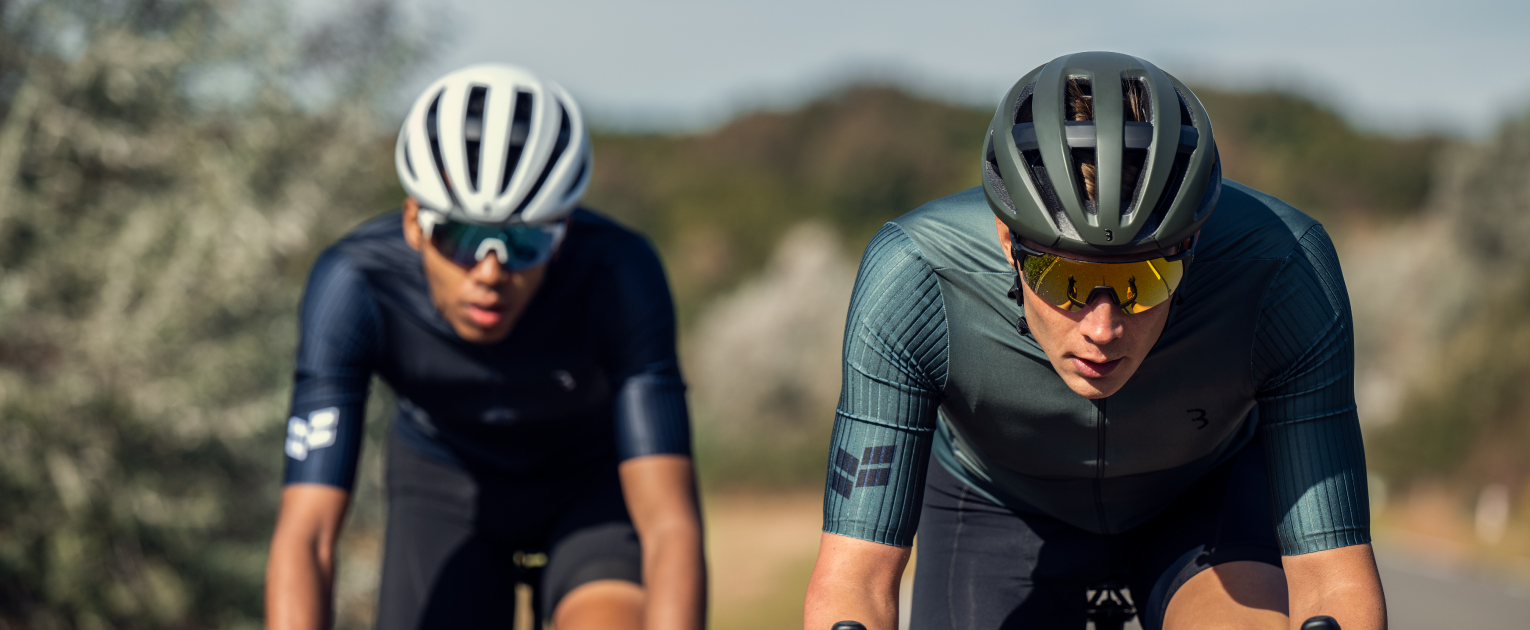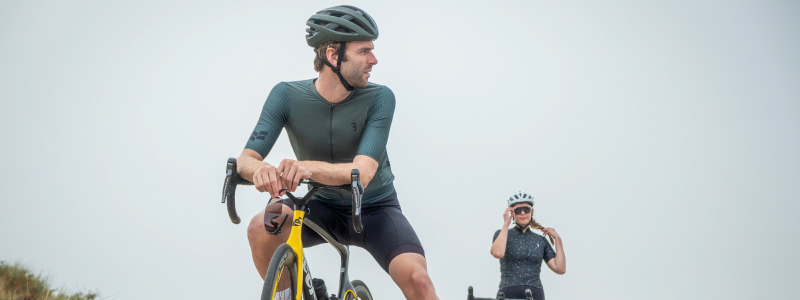JK’s Bohemian Border Bash race
JK’s Bohemian Border Bash race
Ready story

TEXT / BBB CYCLING | PHOTOS / BBB CYCLING
We all know that wearing a helmet on the bike provides us with safety. A helmet can only provide maximum protection when it fits the rider and is adjusted to it's head though. It is therefore important to first make sure your helmet is adjusted to your head prior to your ride. Besides safety, the right adjustments also make sure your helmet is comfortable. A helmet should not be too tight or too loose on your head. A comfortable helmet is a helmet your wear with pleasure.
In this blog we will give you information about how to make sur eyour helmet fits you perfectly and can provide you with the most protection for a comfortable ride.

Almost all our cycling helmets are available in different sizes. By chosing the right size helmet you ensure yourself of the best possible protection in the event of a crash. You determine the right size by measuring the circumference of your head, about 2 centimeters above your eyebrows. In the table below you can find our helmet models and the corresponding sizes. On the detail pages of our helmets you can find the sizes of the helmet with the corresponding head circumferences.
Now that you have found the right size helmet, you are not ready just yet. For a real comfortable fit it is important to adjust the helmet exactly to your head. We are talking about the straps and possibly the retentionsystem.

First things first. Let's make sure your helmet is positioned right on your head. Make sure the helmet sits horizontally on your head like on the illustration below. This way, the helmet can provide maximum protection. Besides, this is the position in which you can adjust the other variables of your helmet.

The retention system that you can find in almost all BBB Cycling helmets is designed to change the inside diameter of your helmet. By turning the retention system you can tighten the helmet around your head. this provides a comfortable and safe fit of your helmet.
Besides the retention system at the back of the helmet, you can also change the fit of your helmet on the sides on most helmets. Where the brackets of the retention system meet the side of the helmet. Here, the bracket can, on some of our helmets, carefully be pulled out, and moved a whole forwards or backwards. This way, the whol retention system will be positioned a bit further forward and can the range of the retention system be used on a smaller diameter.
The versatility of the retention system has no end yet! The buckle on the back of the retention system is designed to fit comfortably on the back of your head. However, you may want to adjust the position of the buckle a little bit for maximal comfort. Most of our helmets are equipped with an extra adjustable feature. By pulling the retention system downswards, the buckle will be placed a bit lower on the head. This way, the helmet will surround your head a bit more for a snug and comfortable feeling. Besides, a ponytail can be pulled through the whole now. When pushing the retention system upwards, you create more room for a more aerodynamic poatition of your head on the bike.


When the retentionsystem is adjusted right, you can start with the straps. Here, two main variables play a role; the dividers and the full length of the straps. Below we will explain this further.
The dividers are those little plastic things that hang on the straps of your helmet, just below your ears. Here, the two straps that come from your helmet turn into one that goes underneath your chin. These dividers may not seem very important, but they play a major role in providing comfort and a good fit of your helmet.
Our dividers are designed to avoid wrinkling of the straps. Besides, they are easy to adjust and make sure the straps are as close to the side of your face as possible. This prevents noise from the wind and allows a nice and snug fit of the straps around your face. Make sure the dividers are positioned just below your ears. This keeps your helmet straight on your head and allows the right fit.

The chin strap is the strap that goes onderneath your chin that actually keeps the helmet in place on your head. The chinstrap can be closed with a plastic clip underneath. Make sure the clip does not go over the outer point of your chin, but lays against your throat. Otherwise the strap could flick over your chin and your helmet can fall off.
Make sure the straps are nice and snug against your head. Not too tight though. A good rule of thumb is that you should be able to keep about two fingers in between the strap and your jaw. When the straps are adjusted, put the remaining length of the strap away on the O-ring for a neat finish and to avoid irritation.


Your helmet is now completely set to your head. Your are ready for a safe ride on your bike. You can always do a last check, by shaking your head. If the helmet is too loose it will move backwards, forwards or to the sides. If this happens, check if you really have gone through all the steps above.
Safety first! And with the tips above you will ride your bike as safe as possible!